#Abe Levitow
Explore tagged Tumblr posts
Text

Wicked “Off To See The Wizard” (1967)
#60s#mgm#tv series#off to see the wizard#spin off#wizard of oz#production art#animation cel#production cel#animation art#wicked witch of the west#abe levitow#chuck jones
34 notes
·
View notes
Text
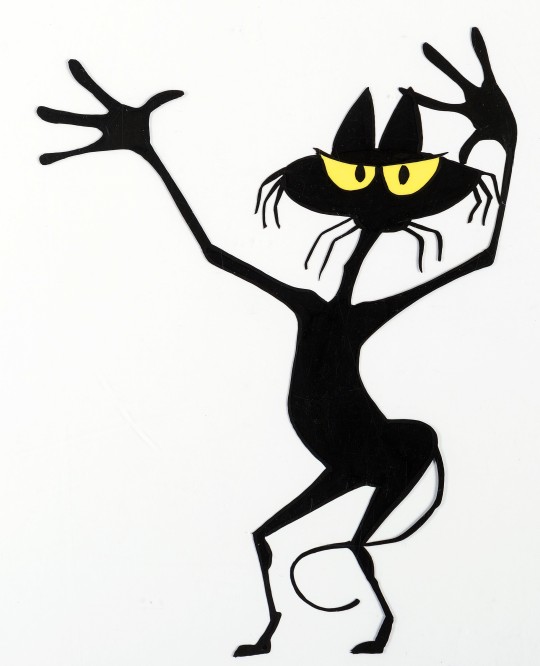
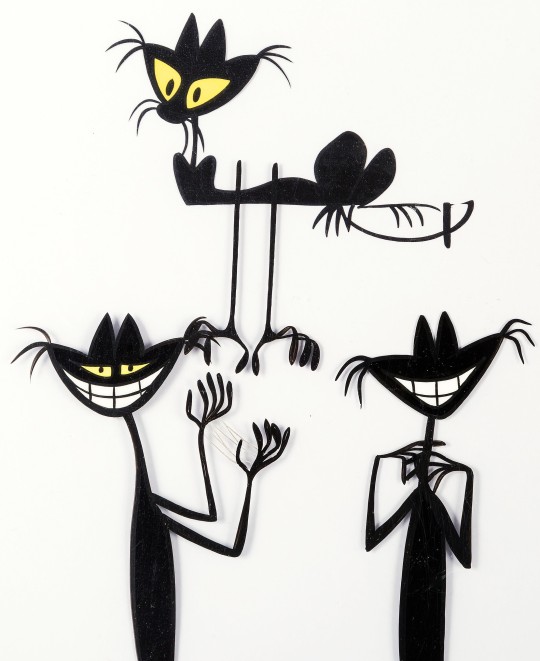
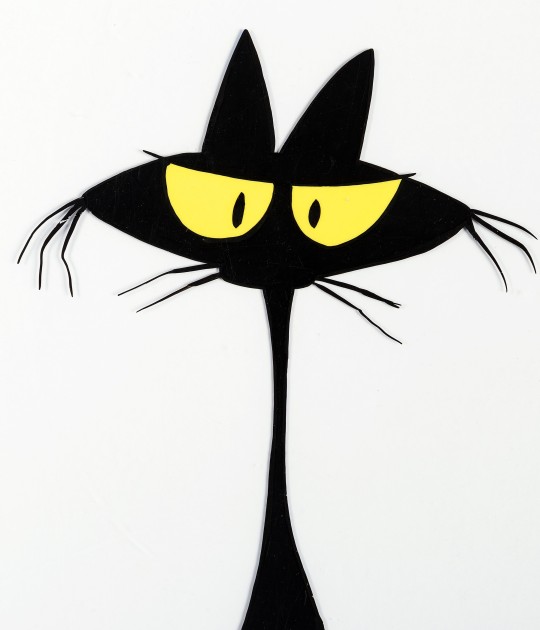


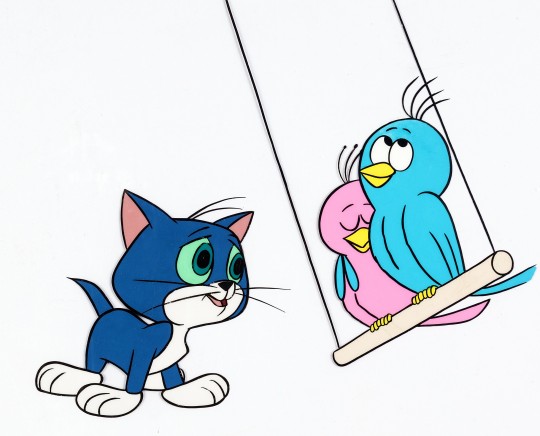

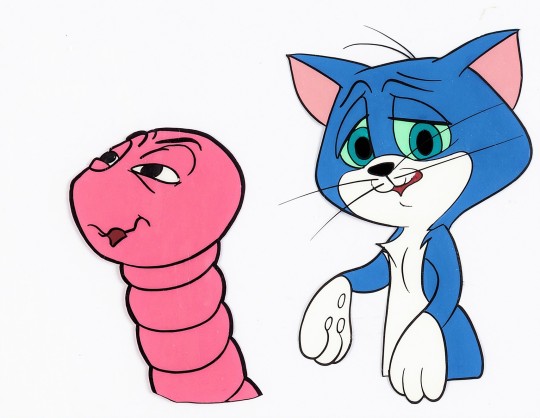
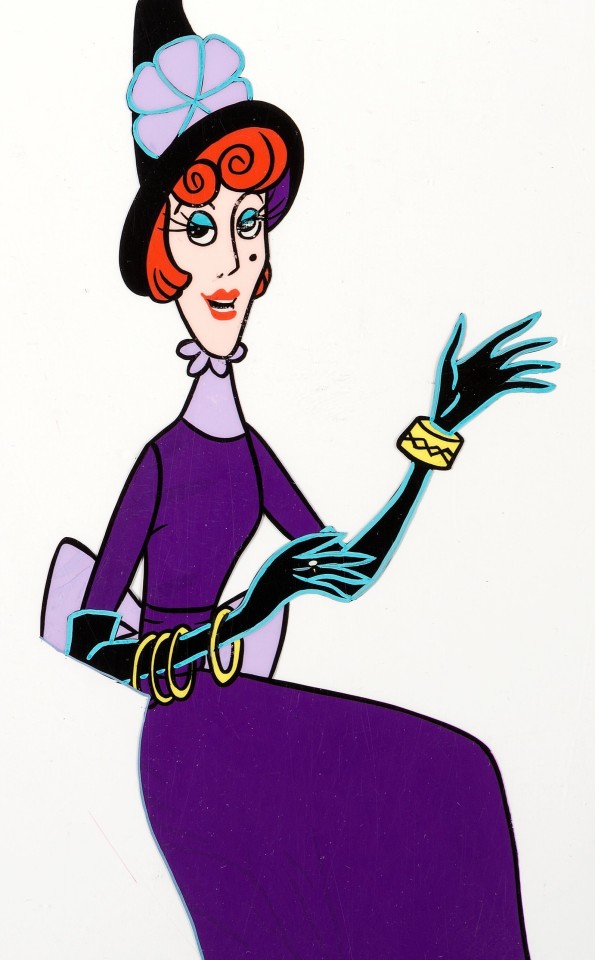
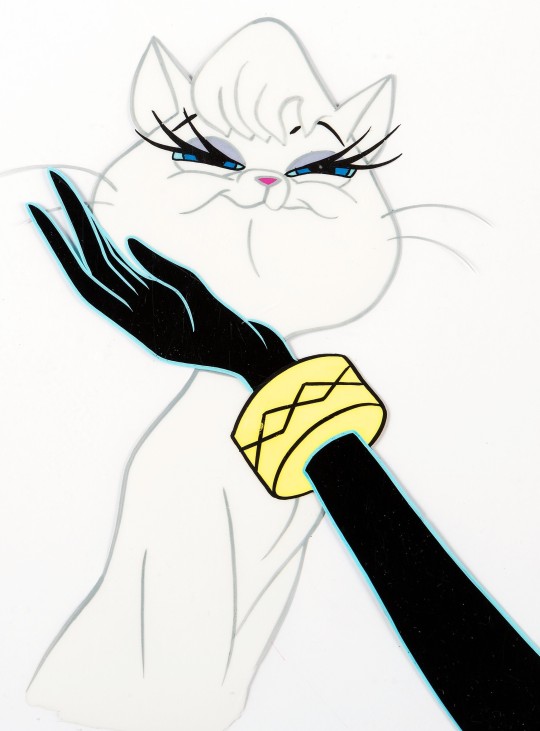
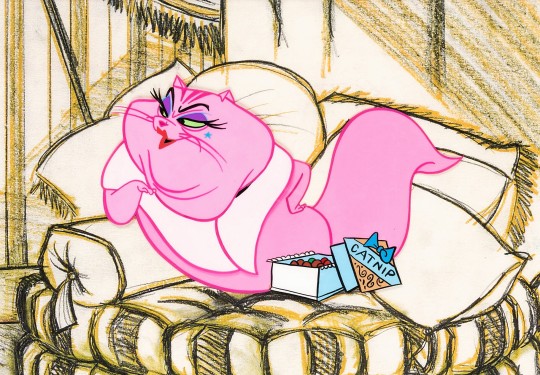
Gay Purr-ee animation cels (1962)
#gay purr-ee#60s animation#animated features#animation cels#60s musicals#abe levitow#judy garland#mewsette#jaune tom#robespierre#meowrice#madame rubens-chatte#60s movies#sixties#1962
171 notes
·
View notes
Text

Martian Through Georgia
(1962, Chuck Jones, Maurice Noble and Abe Levitow)
70 notes
·
View notes
Text
Halloween Short film of the Day: Claws for Alarm (1954)
Ah, the Looney Tunes franchise: an absolute goldmine of character interaction material. Between Bugs and Daffy, Sylvester and Tweety, or the Roadrunner and Wile .E Coyote, there's pretty much a guaranteed laugh going in. So what happens when the less iconic but still enjoyable duo of Porky Pig and Sylvester the Cat decide to spend the night during a trip? Unfortunately for poor Sylvester, the place of choosing is ghost town; the delapidated hotel called the Dry Gulch being hardly an inviting place with it's rundown appearance and creepy decor. But worse of all, for some reason, everything seems to want to kill them.
And of course Porky is oblivious to it all to his feline companion's chagrin.
Directed by Chuck Jones, this classic Merry Melodies short is the second entry in the "horror vacation" trilogy (the others being Scaredy Cat and Jumping Jupiter). And what an enjoyable spoof of the haunted hause archetype this is, with fairly imaginative imagery for the time that I have no doubt inspired some actual horror and horror comedies down the line because of how frightening it may be in a context where it's not played to make a nervous wreck out of poor Sylvester. Seriously, those mice behind the attacks look downright demonic in some shots.
There is some language from Porky that has aged like absolute milk regarding mental conditions, and typical for the shorts of this time some gags are a little too morbid for some modern audiences if thought as a children's cartoon. But man, the balance act between the strangely creepy imagery and Sylvester's failures in trying to convince the VERY foolish Porky about it makes it ideal for the season. Then again, the past short had basically the same premise. So...

Halloween Short film of the Day, part 2: Scaredy Cat (1948)
Yep, let's cover the two of them. I went for Claws for alarm first because it's a vivid memory of mine, but it's hard to not compare the two and even agree with many that find this to be the superior one. So let's get into it.
Sylvester and Porky end up in a creepy locale to spend the night. Though in this case, it's their new home: a creepy old mansion, where strange things start to happen when Sylvester spots what looks to be a cult of murderous mice. And as expected, Porky is none the wiser, treating the poor cat as if he was imagining things. At least until he's the one on the chopping block and it's the feline's turn to save the day.
Like I've mentioned already, it's not remotely hard to see how this is often the favorite among the two. Not only is it the original story of Sylvester being, well, a scaredy cat in a dangerous Halloween context, but less of the short has aged poorly and the comedic aspect is front and center (even if some gags once again venture into a truly morbid level of dark comedy). The production values are also higher, with more detailed backgrounds and complex animation, as the UPA inspired artwork of Claws for Alarm, while driving a more intensely creepy atmosphere, also looks quite flat by comparison. And while one has a rather creepy ending, the other is just a funny slapstick punchilne.
Honestly, it's easy to argue rereleases patching the two shorts together into a longer whole had something going, but both are quite an enjoyable ride if a short one.

#halloween short#looney toons#merry melodies#sylvester the cat#porky pig#mel blanc#chuck jones#Lloyd Vaughan#Ken Harris#Ben Washam#phil monroe#abe levitow#roskirambles
6 notes
·
View notes
Text










Gay Purr-ee (1962)
Directed by Abe Levitow Produced by United Productions of America
79 notes
·
View notes
Text

Happy 80th birthday to the most famous romantic French skunk in all of cartoons, Pepé Le Pew. As part of the major marquee #LooneyTunes characters, Pepé is considered unique. Constantly chasing for love, Pepé is defined by his affectionate yet oblivious personality.

Chuck Jones originally created Pepé back in 1944. He based him off of European actor Charles Boyer from his performance in “Algiers” (1938) (that's part of his joke), his own colleague Tedd Pierce, and loosely off of himself except Pepé has the romantic confidence Chuck lacked as a young boy.
He evolved from his early appearances... “Odor-able Kitty" (named Henry and his accent is fake), “Scent-imental Over You” (named Stinky), “Odor of the Day” (Arthur Davis' only use in a slapstick role), into a fully fledged Oscar winning cartoon set to the sights and sounds of Paris and Europe.



“For Scent-imental Reasons”, Pepé Le Pew’s Oscar winning cartoon, fully establishes the formula of his classic shorts. With the help of Michael Maltese, Pepé mistakes a female tuxedo cat, canonically named Penelope, for a skunk due because of a white stripe. to make Pepé Le Pew come to life.


Mel Blanc's mimicked Charles Boyer’s love-making voice. And there are also some bits of Maurice Chevalier. Chuck Jones and Michael Maltese crafted his exaggerated routine and charm as satire on Hollywood romance movies and the romantic Frenchman for comedic effect. It's his odor that is the problem.


His pursuits often fail but he shows persistence. Pepé’s amusing dialogue spoofing of Boyer, the phony French-English sight gags, and Pepé’s hopping on all fours. There are a few times the formula is flipped when Pepé's smell is neutralized and Penelope romantically pursues him back.



Abe Levitow’s short "Really Scent" subverts the formula. Penelope, Fabrette, is born with a skunk stripe, both of them fall in love except Pepé’s stench drives her away. He finds out what pew means and it breaks his heart. Both make the effort to change and the opposite happens.


Pepé has made 17 classic appearances (including a cameo in a Sylvester & Tweety cartoon) and “Louvre Come Back to Me!” was his last released in 1962.




Since the 1970s, Pepé Le Pew has usually been referenced in cameos, commercials and merchandise (including material that reimagines Pepé and Penelope's relationship to a mutual romance). It's also rare when he gets a starring role once in a while.




To fit with modern times, writers at Warner Bros. aimed to make his French charm more of a focal point with appearances in Baby Looney Tunes (who loves gardening), The Looney Tunes Show (as a wedding planner), Looney Tunes: Rabbits Run (perfume mogul), and New Looney Tunes (as a suave spy).




Tom Ruegger and the writing team of Tiny Toon Adventures created Fifi La Fume as a way to minor changes while being a variation of Pepé Le Pew. If it weren't for Pepé, we wouldn't have Fifi.
The character had been snubbed from recent projects out of caution including Space Jam: A New Legacy and Tiny Toons Looniversity due to changing sensibilities and trends. There was even a feature-length film putting Pepé Le Pew in a rom-com heist that was also scrapped.



This does not mean WB is retiring Pepé altogether. He is misunderstood as he is considered a time capsule of Hollywood during the 1940s and 1950s. There is hope that he'll be used again with the right people and new concepts in the future. As long as fans love him, Pepé lives on. Vive l’amour!

(After the Warner Bros. Discovery merger, they appear to be loosening things up. Pepé's recent appearances in Looney Tunes: World of Mayhem as Gendarme Pepé and in Joker: Folie á Deux for example show that WB hasn't washed their hands off from him. Give or take a few years until they settle on a new concept.)
In conclusion, happy 80th birthday to Pepé Le Pew. And to the voice actors that got to voice him, thank you for making Mel Blanc proud. And to those who watch reruns of his shorts, buy his merch, read his comics, and sharing your love of him through fanart... Merci. Pepé will be honored and evolve!
8 notes
·
View notes
Link
The 1962 animated musical Gay Purr-ee stands out in animation history for its anthropomorphic cats, Parisian flair, and boundary-pushing narrative elements. Directed by Abe Levitow and produced by UPA studios, this feline fantasia featured the vocal talents of Judy Garland in her penultimate film role. Let's talk the kitty cat movie from the 1960sUPA Animation kept it mature for Gay Purr-eeIt wasn't the biggest film in 1962Warner Archive raids the back shelvesSome final thoughts on the Gay Purr-ee Warner Archive Blu-rayGay Purr-ee is now available from the Warner Archive Collection. Purchase your own copy at MovieZyng! Let's talk the kitty cat movie from the 1960s Set in 1895 France, Gay Purr-ee follows a naive cat named Mewsette who is lured from her rural hometown to Paris by the sophisticated yet manipulative Jaune Tom. He promises to make her a glamorous star, but has ulterior motives. The story provided a female empowerment message as Mewsette realizes inner strength and returns home on her own terms. Supporting cats voiced by Robert Goulet, Red Buttons, and Morey Amsterdam provide humor and misadventures along the way. The UPA animation studio had been known for stylized design in films like Mr. Magoo, applied vividly to Gay Purr-ee's Parisian environments and anthropomorphic cats. Musical numbers also broke animation ground, led by the virtuoso singing of Judy Garland as Mewsette. UPA Animation kept it mature for Gay Purr-ee Despite its G rating, Gay Purr-ee contained narrative elements quite mature for early 1960s animation. Mewsette is essentially coerced by the manipulation of Jaune Tom, who looks to exploit her talents for profit in Paris. This story angle of a naive girl misled by false promises had edge for the era. Perhaps elevating cats as the characters provided some necessary distance from such weighty themes. But Gay Purr-ee proved animation could tell stories beyond fairy tales. Mewsette reclaiming agency and returning home under her own power sent a message of feminine strength. The film never found a major audience during initial release due to minimal marketing support. But its bold narrative left a mark on those who discovered Gay Purr-ee, foreshadowing more boundary-pushing animated films to come. It wasn't the biggest film in 1962 While underseen in its day, Gay Purr-ee's qualities gradually earned it a following in syndication and home video. Animation fans and musical enthusiasts gained new admiration for its sumptuous designs and lively songs. Judy Garland's starring role provides strong appeal for fans of her talents. This was her penultimate performance before being dismissed from MGM, adding poignance. Yet her vocal brilliance remains untouched, especially on highlights like "Little Drops of Rain." Gay Purr-ee's empowering story has also earned modern regard for its progressive female themes. Mewsette evolves from doe-eyed innocence to a courageous and determined heroine over the course of her journey. Warner Archive raids the back shelves Warner Archive's new Blu-ray release of Gay Purr-ee brings UPA's stylized animation to brilliant HD life. The digital restoration pops colors vividly while preserving a subtle grain structure. The DTS-HD 2.0 channel mono track has excellent fidelity for the musical numbers and dialogue. The only special feature is the theatrical trailer, but the vibrant presentation is a treat for this overlooked animated gem. Sixty years later, Gay Purr-ee stands as a groundbreaking and mature animated fable. Warner Archive's Blu-ray provides the best way for modern viewers to fall under its feline fantasia spell. A new appreciation continues to grow for this unique entry in animation's musical and feminist evolution. Some final thoughts on the Gay Purr-ee Warner Archive Blu-ray Gay Purr-ee comes to Blu-ray from Warner Archive with a series of classic Warner Brothers cartoons from the era. You get the audio only portion of five songwriter demos and the original theatrical trailer. For a movie that I would only see shown at odd hours on HBO as a kid, there is certainly a lot of supplemental material floating out there in the ether. I love it when Warner Archive digs this sort of stuff up to the Blu-ray generation. Share it with your kids and make the one who likes it into your favorite. Gay Purr-ee is now available from the Warner Archive Collection. Purchase your own copy at MovieZyng!
0 notes
Photo





274 notes
·
View notes
Text





The Phantom Tollbooth (1970)
#the phantom tollbooth#the adventures of milo in the phantom tollbooth#chuck jones#abe levitow#dave monahan#animation#animation film#animation movie#animated movies#animated film#animated cinema#cult cinema#cult movies#cult film#movie#film#cinema
99 notes
·
View notes
Photo

The Phantom Tollbooth
directed by Chuck Jones and Abe Levitow, with Dave Monahan, 1970
43 notes
·
View notes
Text
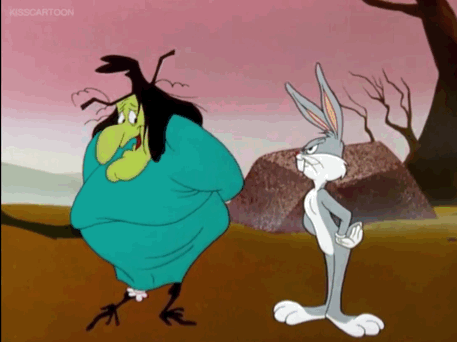
I Could Be Rinsing Out A Few Things But - “A Witch's Tangled Hare” (1959)
#50s#warner bros#looney tunes#witch hazel#bugs bunny#meat cleaver#cartoon prop#zip out#gif#abe levitow
74 notes
·
View notes
Photo










Mister Magoo’s Christmas Carol - Animation cels (1962)
#mister magoo's christmas carol#animation cels#60s movies#christmas movies#animated features#60s cartoons#animation#60s christmas specials#abe levitow#a christmas carol#ebenezer scrooge#charles dickens#sixties#1962
176 notes
·
View notes
Text
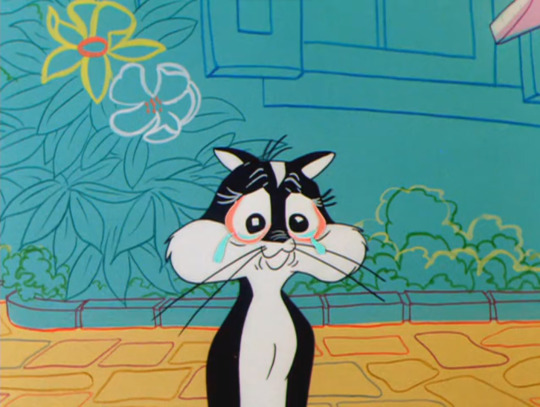
Really Scent
(1959, Abe Levitow)
33 notes
·
View notes
Photo
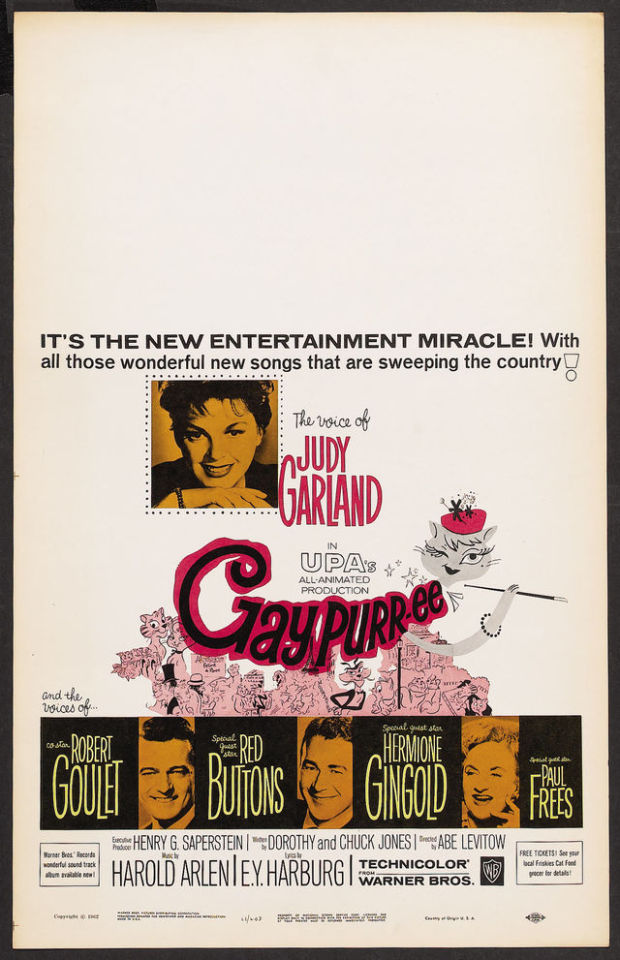
Today’s animated film is: “Gay Purr-ee” (1962)
“Mouser Jaune Tom and house cat Mewsette are living in the French countryside, but Mewsette wants to experience the refinement and excitement of the Paris living. But upon arrival she falls into the clutches of Meowrice. Jaune Tom and his friend Robespierre set off to Paris to find her.”
12 notes
·
View notes
Note
IIRC. 1957’s Drafty, Isn’t It? credits Abe Levitow doing character layout so it seems that jones, like Clampett for a while, had someone else in his unit doing character layouts. Which is rather interesting given that jones usually done character layout by himself… I wonder why the character layout credit was only for that one cartoon and not the other cartoons??? I’ve learned that the layout credit = background design and backgrounds = final background paint.
I agree about the WB screen credit system being a hot mess. Most golden age cartoon screen credits were hot mess. The New York studios and Screen Gems for the longest time as well.
I'm really curious on what a layout artist is. Do you know?
layout’s a finicky thing to describe because it’s so all encompassing, and there are so many interpretations of it, especially nowadays in the current animation landscape where the definition seems to vary by production. i myself am even not 100% confident in my answer!
but, essentially, it’s a visual guide of a scene for the animators. this can be many things: clarifying how a pose is supposed to look, with the animator following/mimicking the art style of the layout artist to give the scene a coherent, consistent look (putting it “on model”, in layman’s terms. the layout artist’s drawing would be considered the model). that would be character layout. a layout artist can also establish the way the scene is supposed to be structured—how characters interact with the background environments, how the background environments frame the characters, what the background is even supposed to look like. that’s background layout. likewise, a layout artist also registers the camera field—indicating where the camera is supposed to be positioned and how much of the character(s) fits in the frame.
in-house layout departments are scarce in a lot of modern productions nowadays, and many productions will try to have their own version of a layout team lumped under the term “character design”. you’re not actually designing characters, but refining the poses drawn in the storyboards to bring it even further to the model of the show, so that the animators have a visual guide to follow. sometimes, a board artist will draw a particular drawing that the “character designer” needs to clarify so the animators know how to put it on model. these are usually called “special poses” which, again, is basically slang for layout. this is how we operate on SpongeBob now. it seems LTC did as well.
it’s a bit different in a golden age context though. the general point is still the same in that the layout artist will collaborate with the director and often dictate the general art style of the short. hell, sometimes the directors WERE their own layout artists. Chuck Jones and Bob McKimson were both their own character layout artists in the ‘50s—this is why it’s practically impossible for someone like me to be able to discern who the hell is animating what in a ‘50s Chuck Jones cartoon because they adhere SO STRICTLY to his style
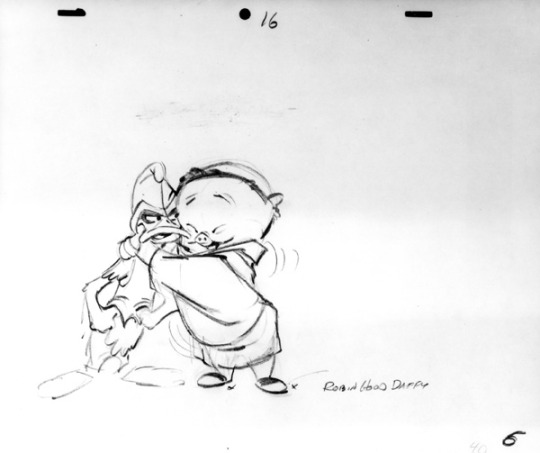

whereas Bob McKimson—i’ve mentioned this before, but i just brought it up yesterday and it’s on my mind. here’s a character layout he did for Fool Coverage (which you should watch very good cartoon), and here’s Rod Scribner’s interpretation of it below…
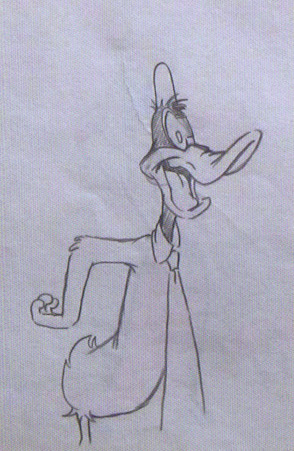

obviously not very loyal. but Scribner’s interpretation is much FUNNIER and works way better in animation than McKimson’s; McKimson’s drawing is still a GREAT drawing and super solid on its on, but definitely a much more conservative approach. you can also see, though, how much of his personal style leeches into his own shorts as well
or this here: John Carey was Bob Clampett’s layout artists for a good portion of his time in the “Katz unit” (aka black and white cartoons), and also animated this very scene he laid out. the two drawings are practically indistinguishable, but there are definitely minor differences. he dictates how the scene is to look


i’ve mainly been talking about character layout, but here are some background layouts indicating where the characters are to fit in the shot as well. this is more all encompassing.
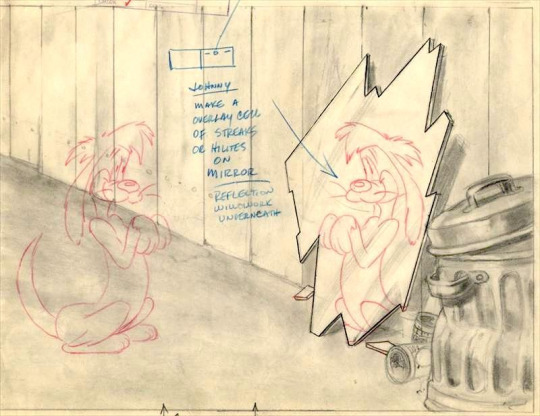

the credits on LT shorts are such a continuous melting pot of nonsense for many reasons, and one of it is because it took until… 1945? 1946? i think ‘45, for them to credit the layout artists… and background artists (who rendered and painted the BG layouts)... and Mel Blanc. and so this is sort of where my knowledge flounders a bit. we know that Maurice Noble was Chuck Jones’ BG layout guy in the ‘50s, and we know Chuck did all his own character layouts. that’s fine enough. but i have no idea, if, say, was John Carey doing background layouts as well in Clampett’s cartoons? was it his background painter, Dick Thomas? Clampett himself mentioned doing the layouts on A Tale of Two Kitties, and the staging of the short in that one definitely has some very warped and drastic angles not usually found elsewhere, so it’s safe to assume he was working on BG layouts in that. but where is the line drawn?? who is responsible for what?
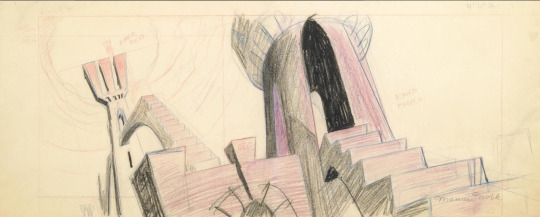

thanks to Warner’s bunk credit system it’s been difficult to piece together. a lot of very talented artists that worked on these shorts never got their credits or dues. everyone knows “oh yeah, Chuck Jones’ shorts in the ‘40s are really stylized and flat.” but do they know the name John McGrew? Bernyce Polifka? Eugene Fleury? all of whom were a part of establishing this style, but also maintain independent subtleties to their own cartoons they worked on? how do Fleury’s paintings based off of McGrew’s layouts in The Case of the Missing Hare or The Aristo-Cat differ from Polifka’s paintings based off of McGrew’s layouts in Wackiki Wabbit and Tom Turk and Daffy?
i’m going off on a tangent, but my point stands in that it’s a very complicated, multifaceted aspect of the animation process that doesn’t have one meaning. it impacts so many different aspects and even how it impacts or WHAT it impacts differs. basically, it just sets the stage for how the scene looks in the final animation, whether it be where the characters and camera are positioned, how the characters look or how the backgrounds look. think of it as the cartoon’s blueprint.
68 notes
·
View notes
Text

Termite Terrace Club - October 31st
Happy Halloween.
1930 - The Booze Hangs High - Dir. Hugh Harman and Rudolf Ising
1942 - The Hare-Brained Hypnotist - Dir. Friz Freleng
1953 - Catty Cornered - Dir. Friz Freleng
1959 - A Witch’s Tangled Hare - Dir. Abe Levitow
TV
1992 - Taz-Mania: “Boys Just Wanna Have Fun” / “Unhappy Together”
2022 - Bugs Bunny Builders Season 1: “Big Feet”
#looney tunes#looneytwt#wb#warner bros#bugs bunny#witch Hazel#sylvester the cat#tweety bird#Elmer Fudd
5 notes
·
View notes